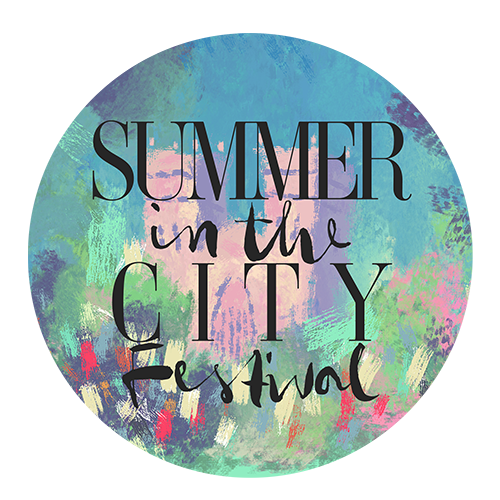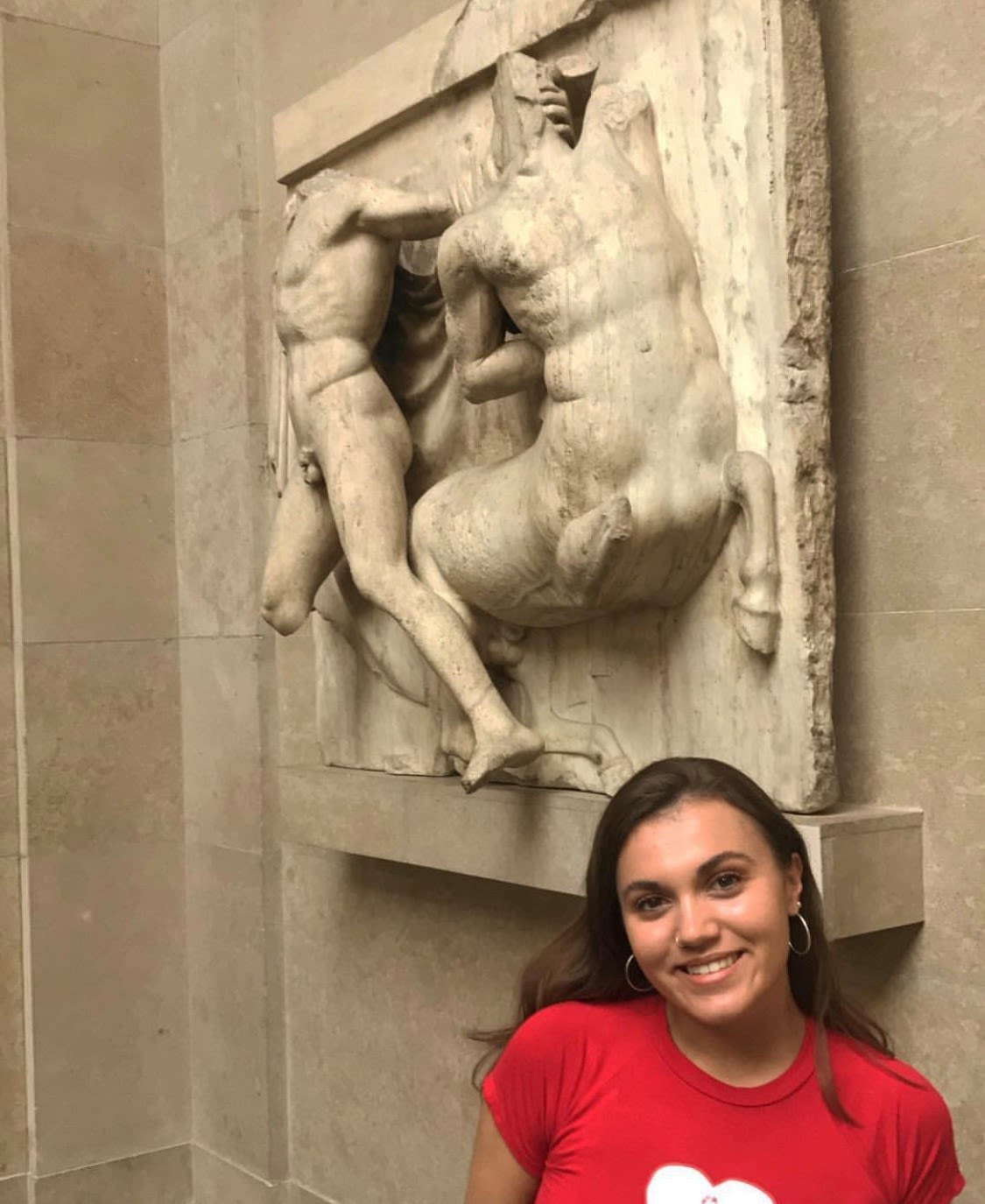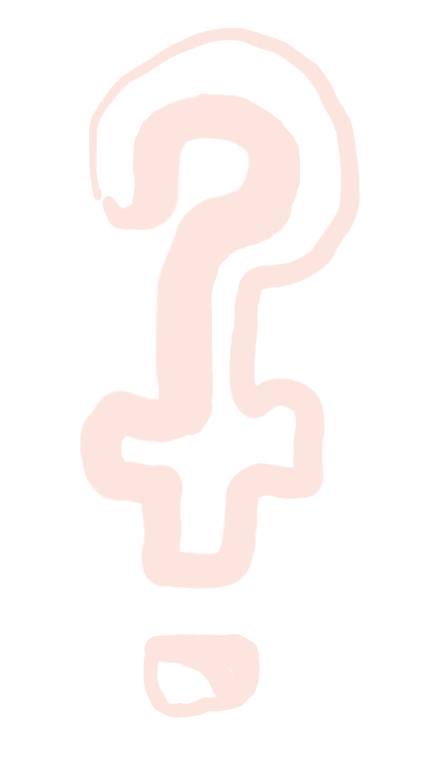Veiled Women: What Does Feminism Mean to You?
An online exhibition consisting of the works of four female-identifying and North Eastern-based artists answering the question: what does feminism mean to you?
Curated by Elle Anderton

Student Responses
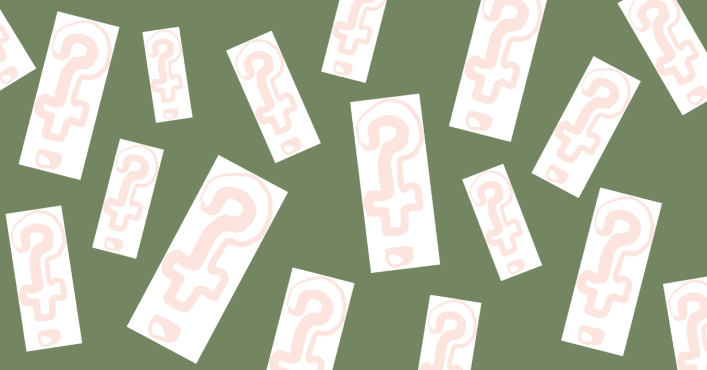
Student engagement has been an exceptionally important aspect of the Veiled Women exhibition.
Durham University students were encouraged to become involved with the Veiled Women exhibition, by answering the question: what does feminism mean to you?
"I wanted to ask students for their opinions, as I was interested in what their responses would be, as my fellow peers, and especially to what extent their opinions would reflect the interpretations of each artist in this exhibition. Also, since the Student Art Prize is focused around Durham University students, it was important to me that students be involved in my exhibition.
I think it is important for everyone, especially students and young people, to engage in feminism, no matter their prior engagement and experiences. I believe that if I can encourage further engagement through this exhibition, then I will have contributed positively to the feminist cause." Elle, Curator.
Keep scrolling for a selection of student responses, from across the academic years, and the various degree subjects, in Durham University. The response received was overwhelming, with quotes having to be selected at random. Please know that your contribution is much appreciated!
Finally, please make sure to keep these opinions in mind, as you'll find that a lot of the themes discussed will re-appear in the artworks shown after!


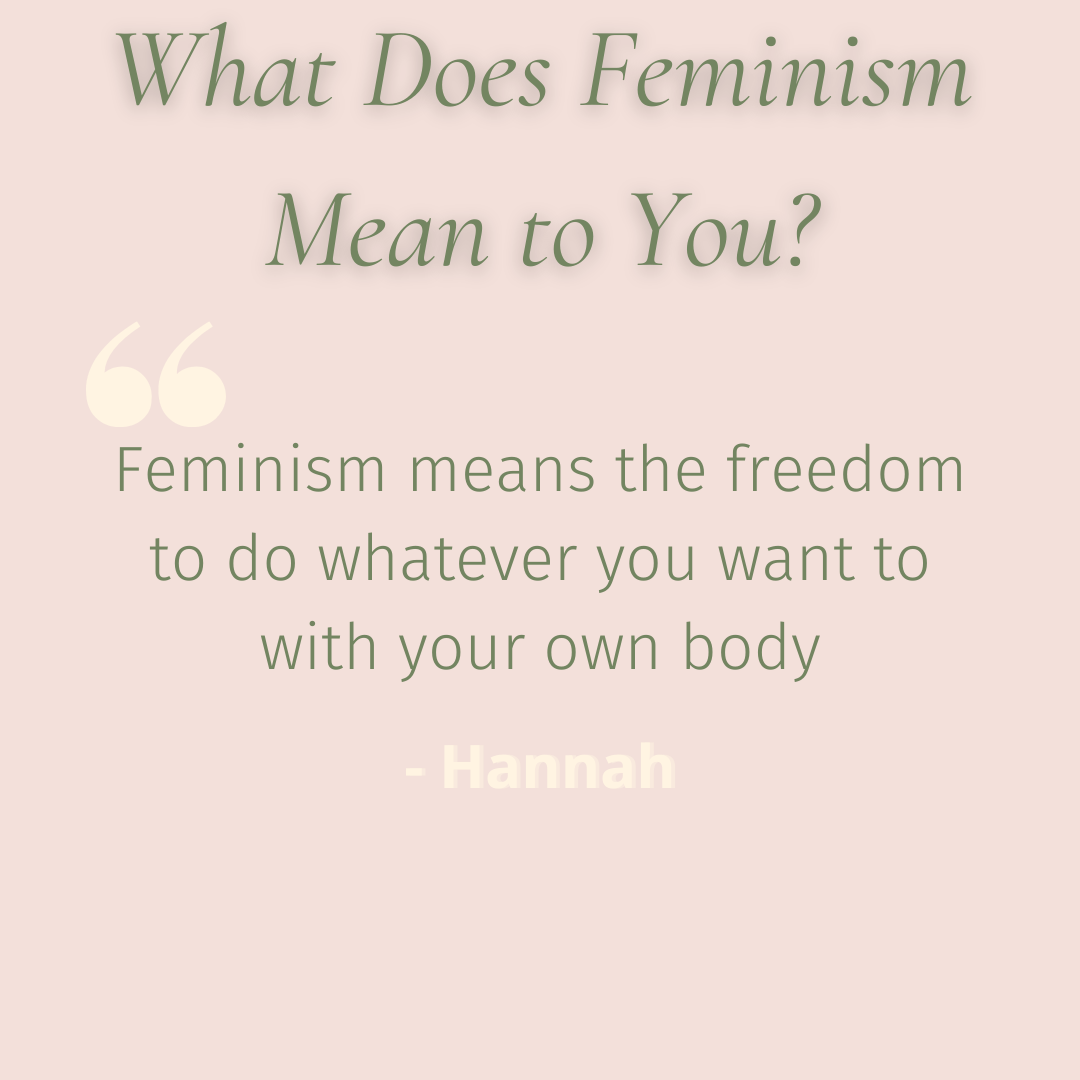
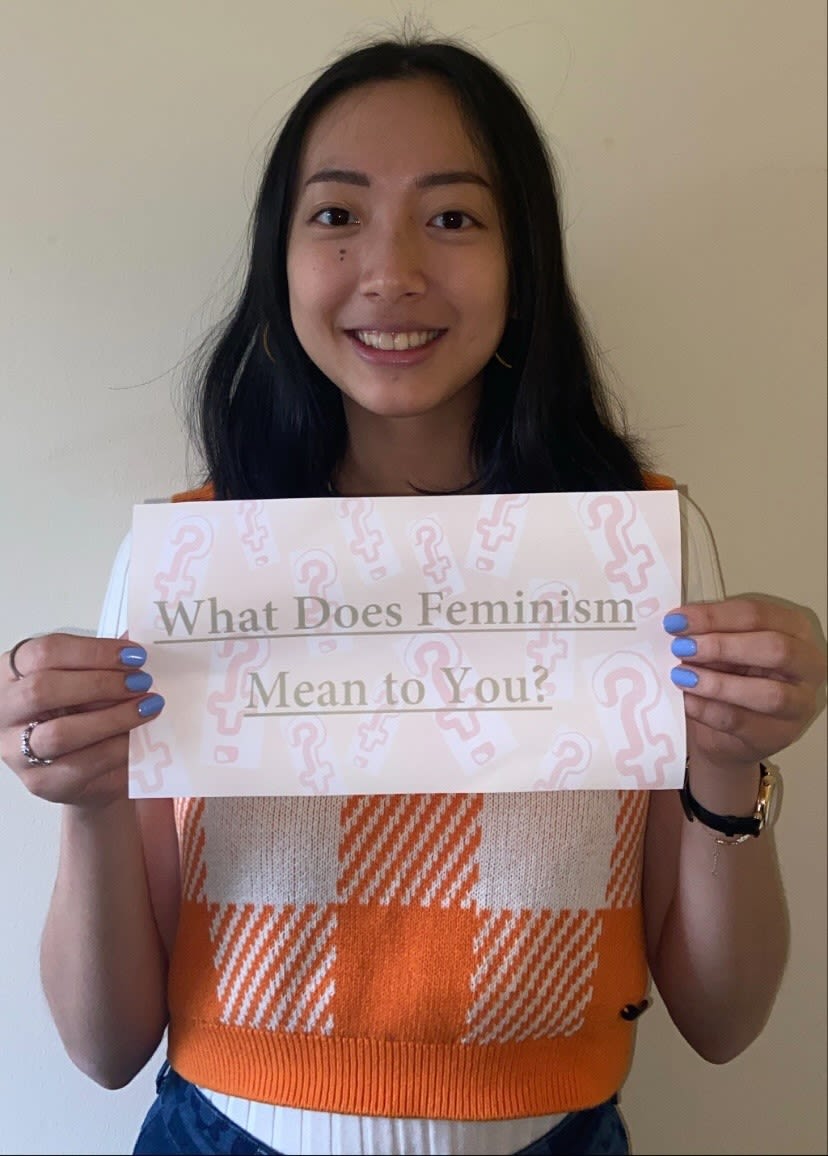
Durham University Geography student Viv.
Durham University Geography student Viv.

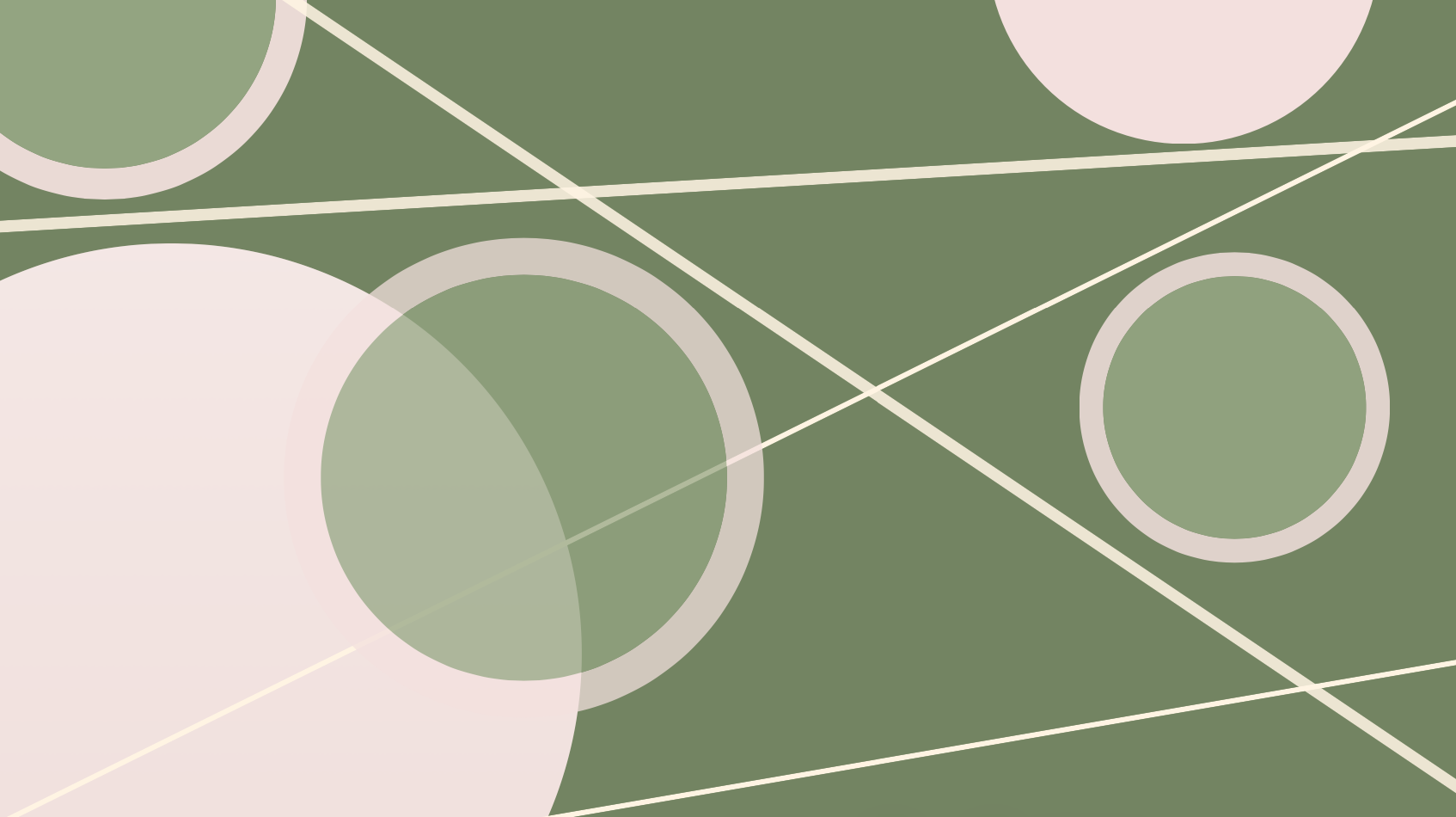
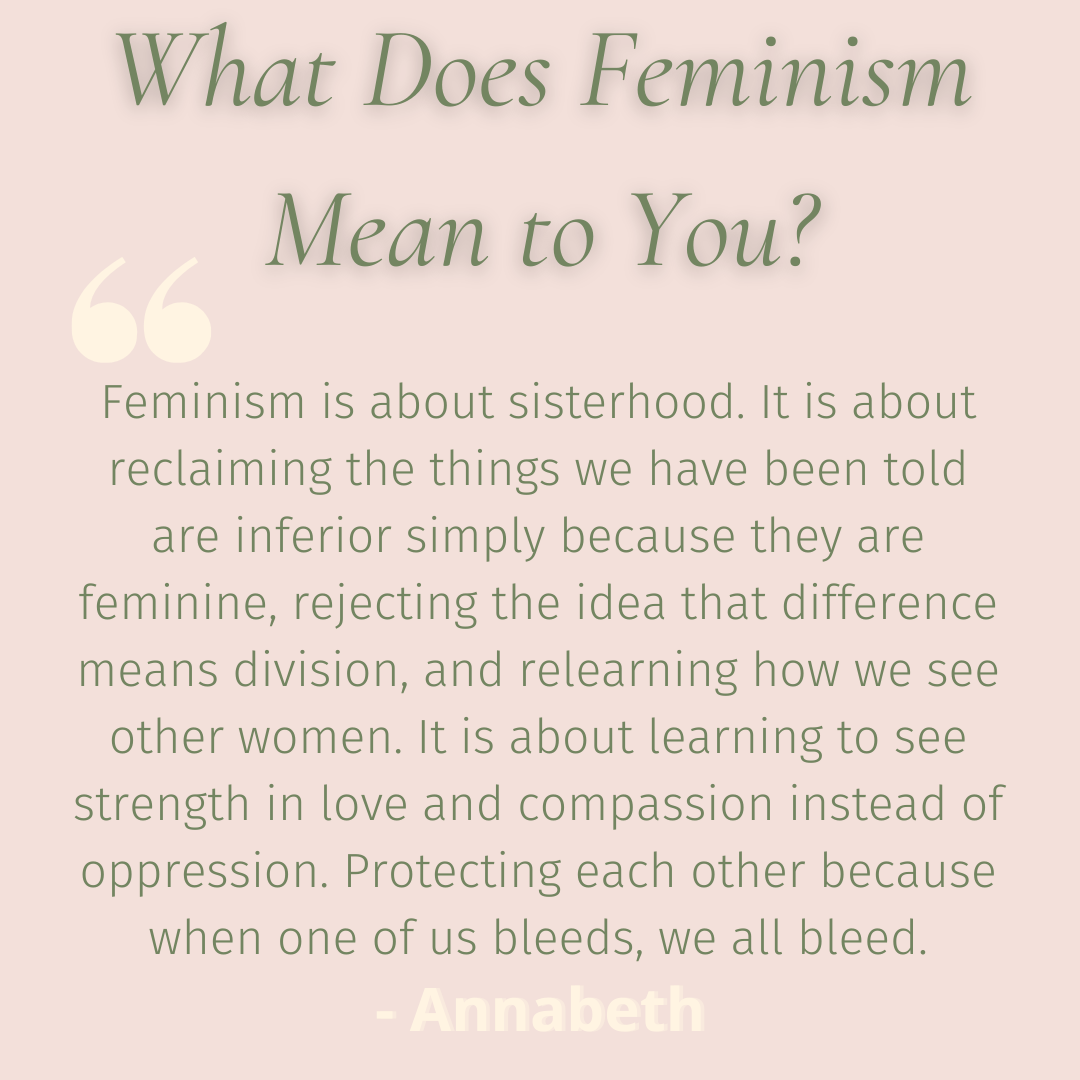
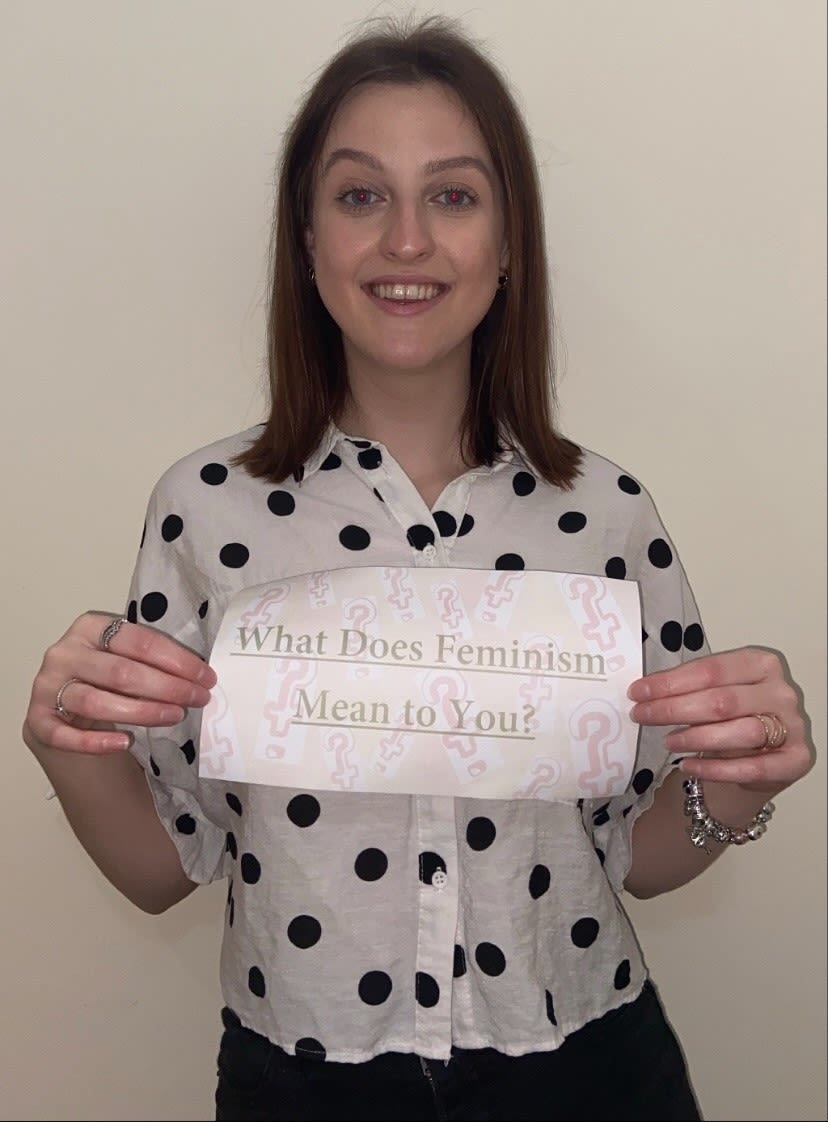
Durham University History student Lucy.
Durham University History student Lucy.
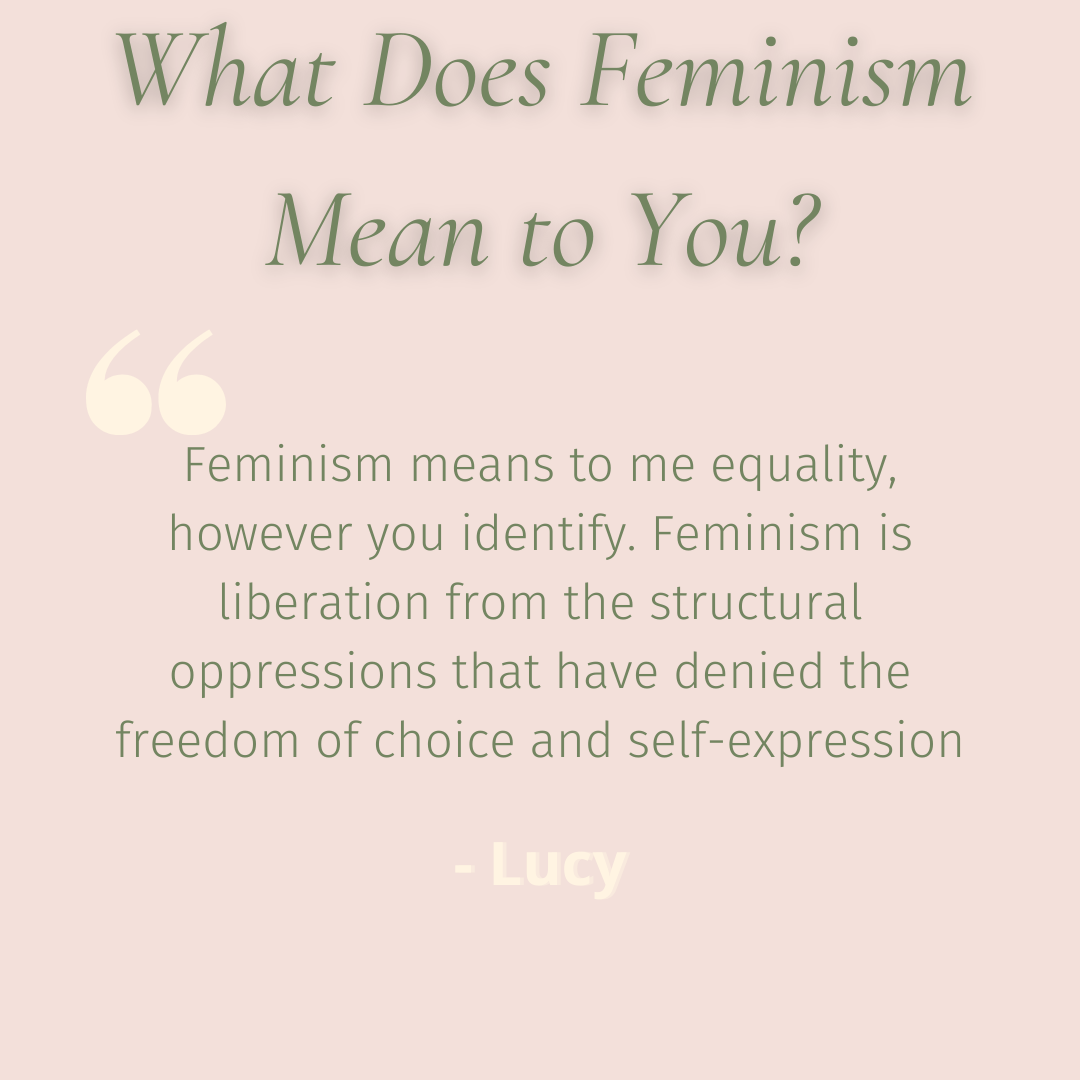


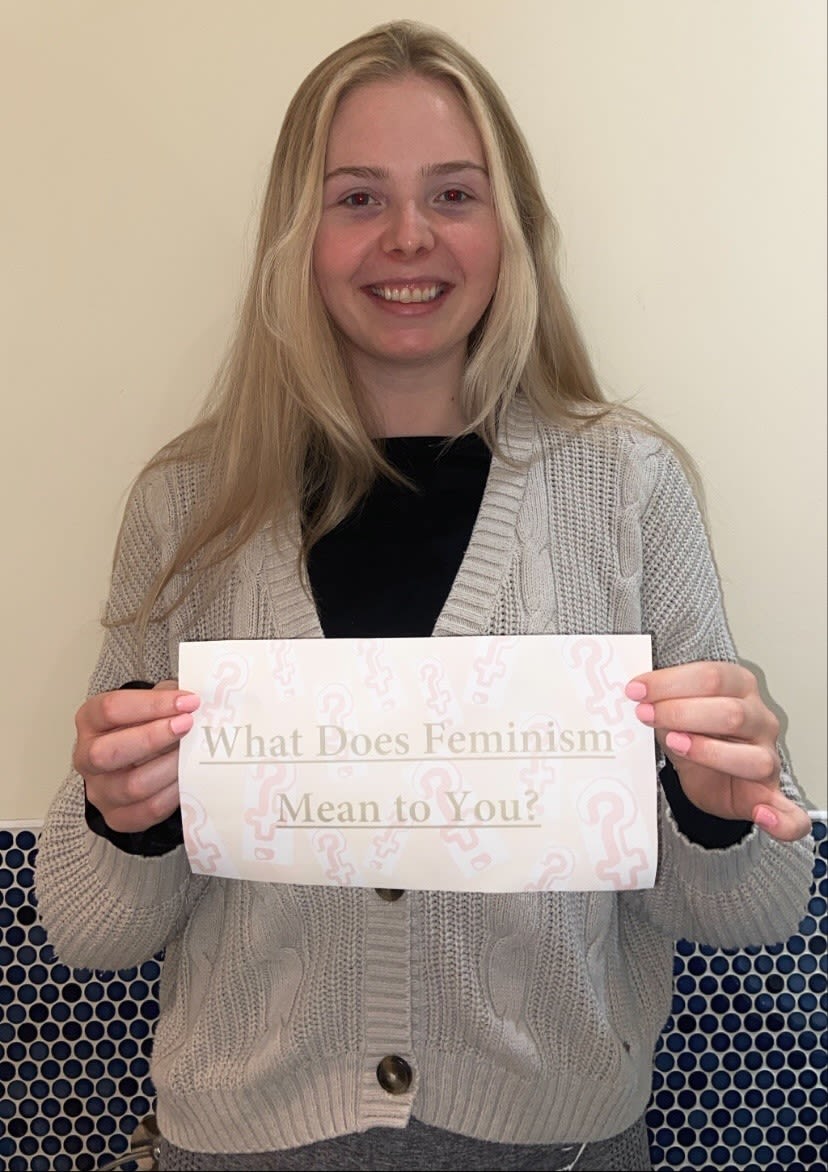
Durham University Chemistry student Tilly.
Durham University Chemistry student Tilly.
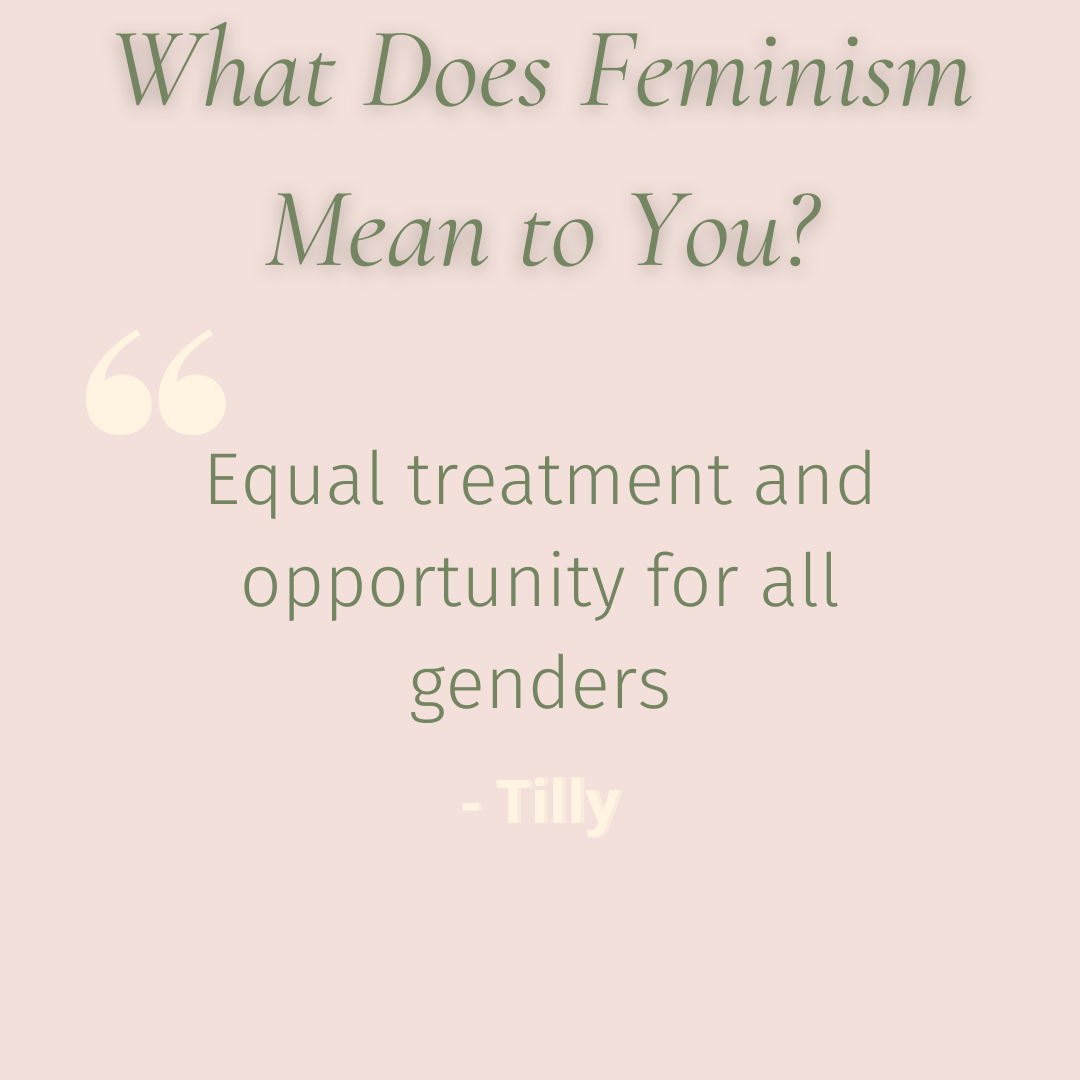

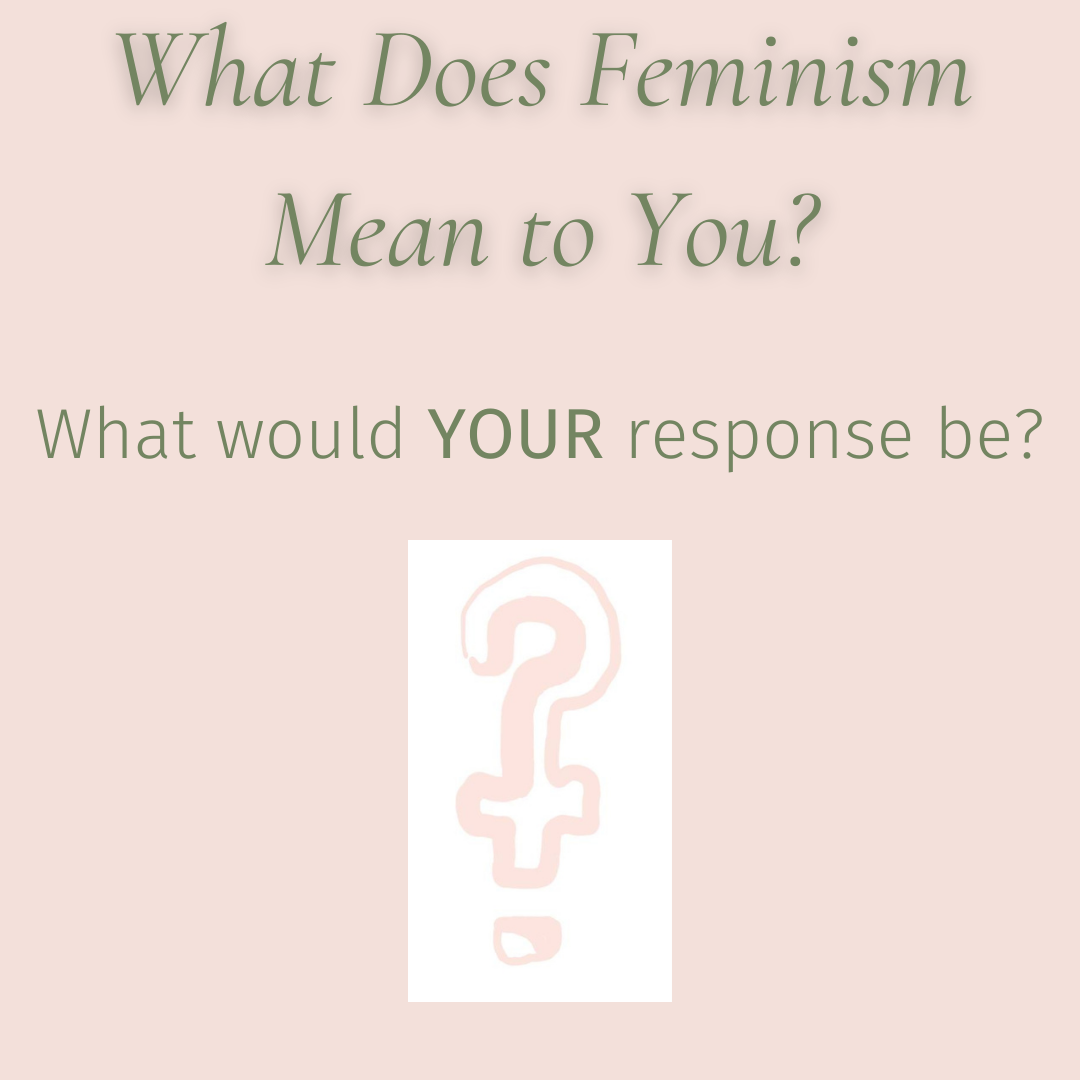
Before you head into the exhibition space to view all of the amazing artworks displayed, please take a moment to think about what YOUR answer would be to the question: what does feminism mean to you?
Are 'our' collective ideas on feminism actually very similar?
Take a look at this short video clip below, to hear Elle's own answer to the question of the hour:
Curator Elle's answer to the question: what does feminism mean to you?
Curator Elle's answer to the question: what does feminism mean to you?
The Artworks

Much like the students who engaged with this exhibition, the artists involved were asked to submit an artwork surrounding the question: what does feminism mean to you?
As well as submitting their artwork, the artists were asked to create a short video explaining their artworks and how they relate to the question at hand.
"I decided to choose these four artists, not only because they are all based in the North East and identify as female, but for a number of other reasons also.
Firstly, I wanted to include artists who work in a wide variety of mediums, in order to broaden the exhibition out to include some non-traditional artforms. Therefore, as you will see, we have artists working with multimedia, collage and even incorporating some digital artforms, which I hope will make for an exciting array of pieces for you!
Secondly, they all focus to some extent on feminism in their pervious artistic practice, and so I thought it would be interesting to see what aspect of their personal feminism they would focus on, if posed the broad question of: what does feminism mean to you?" Elle, Curator.
As you move your way through this exhibition space, watch out for the the Curator's Notes at the end of each artist's profile, for some of Elle's personal insights into the works!
Please also note that the following artists are presented in alphabetical order.

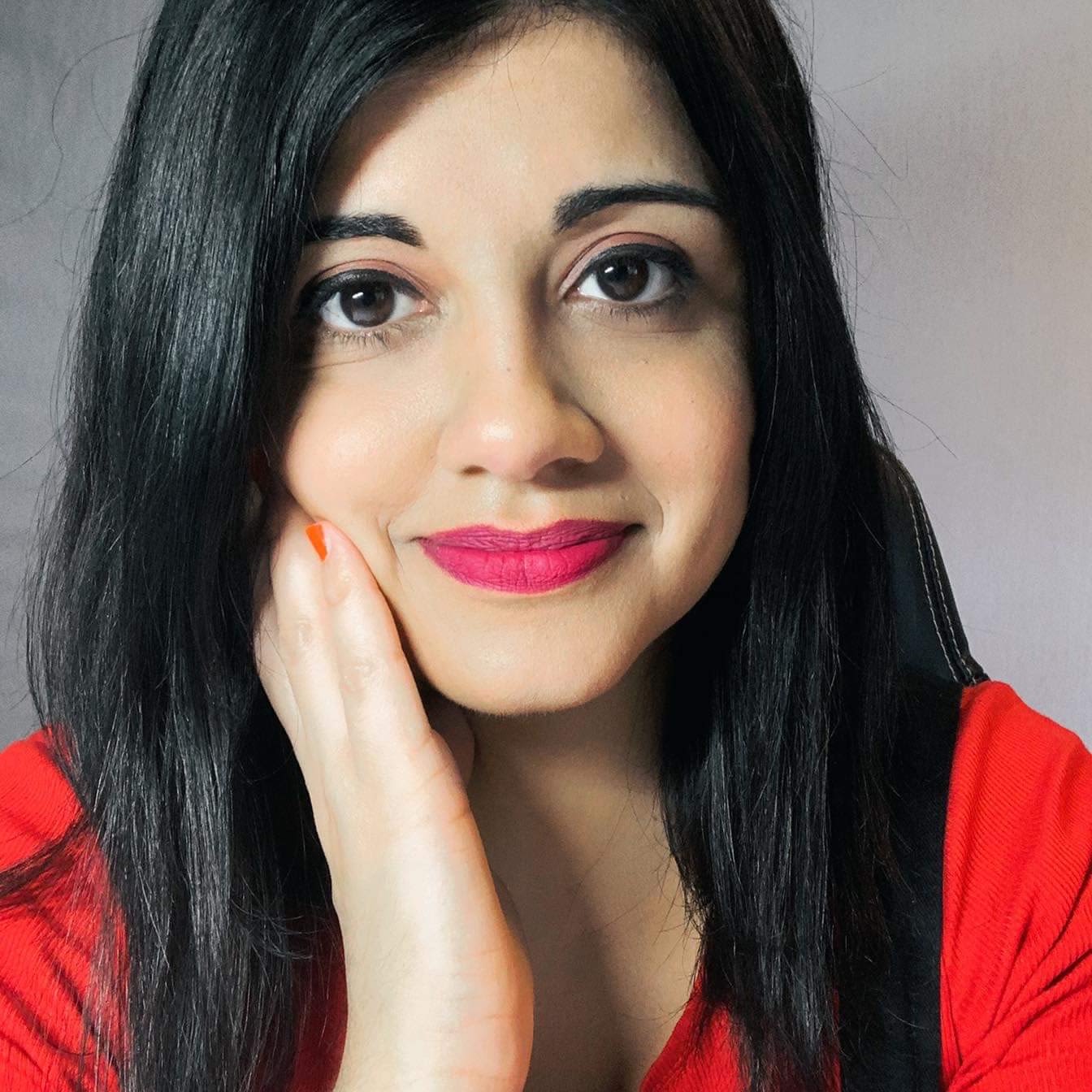
Headshot of Sofia Barton. Photographed by herself.
Headshot of Sofia Barton. Photographed by herself.
Savage by Sofia Barton (she/her)
Sofia Barton is a Punjabi multidisciplinary artist from the North East.
Since graduating from Edinburgh Napier University in 2012, she has worked as a professional photographer, documenting hidden histories and communities.
In 2017, Sofia transitioned into fine art, and has since worked with Nasty Women UK, Split Milk Gallery, Dockside Gallery, Wild in Art, Northern Pride and the BALTIC.
Sofia is fascinated by heritage, culture shifts, and feminism. She is an avid speaker for women's rights and ethnic minorities.
Sofia's submission for the Veiled Women exhibition is called Savage, which depicts the Hindu goddess Kali.
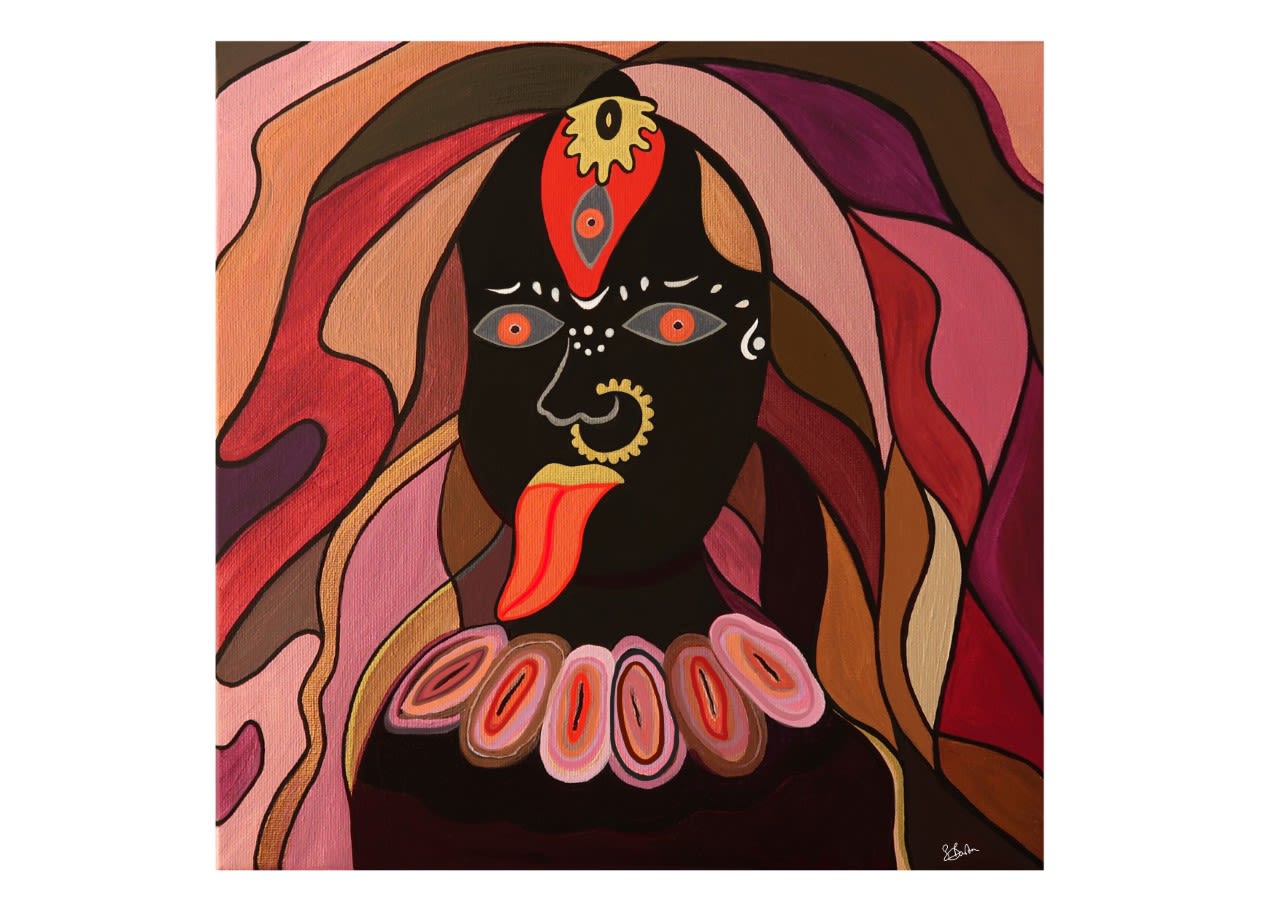
Sofia Barton, Savage (2021), 30 X 30 cm mixed media on canvas, image courtesy of the artist.
Sofia Barton, Savage (2021), 30 X 30 cm mixed media on canvas, image courtesy of the artist.
Interview with Sofia Barton for Veiled Women (2021).
Interview with Sofia Barton for Veiled Women (2021).
Interview with Sofia Barton for Veiled Women (2021).
Interview with Sofia Barton for Veiled Women (2021).
Curator's Note: My favourite part of Sofia's artwork is the necklace she gives the goddess Kali. Sofia explained that the necklace represents a vulva. Sofia decided to implement the vulva as a decorative element within her painting, so that the vulva would be associated with the idea of beauty. Sofia believes that the vulva is a beautiful aspect of a woman's body, and that it should be celebrated. This is exemplified within Sofia's painting, since each vulva is depicted as little gems around Kali's neck, which the goddess wears proudly.
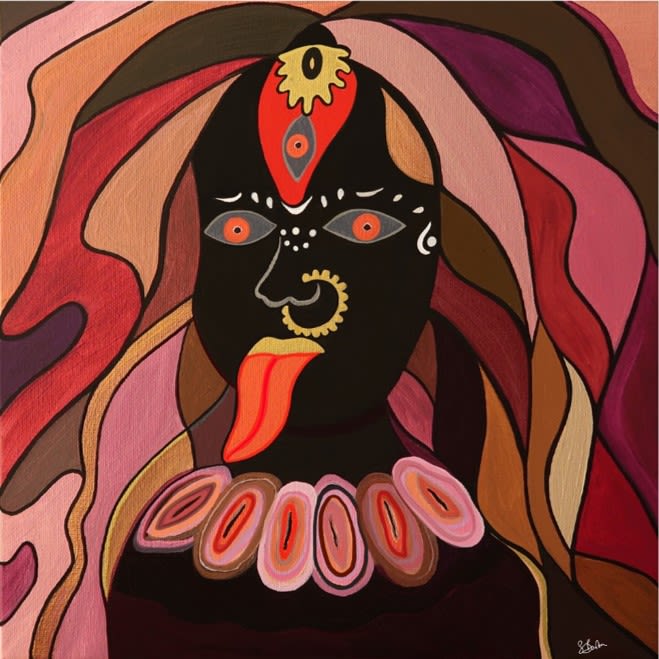
Sofia Barton, Savage (2021), 30 X 30 cm mixed media on canvas, image courtesy of the artist.
Sofia Barton, Savage (2021), 30 X 30 cm mixed media on canvas, image courtesy of the artist.

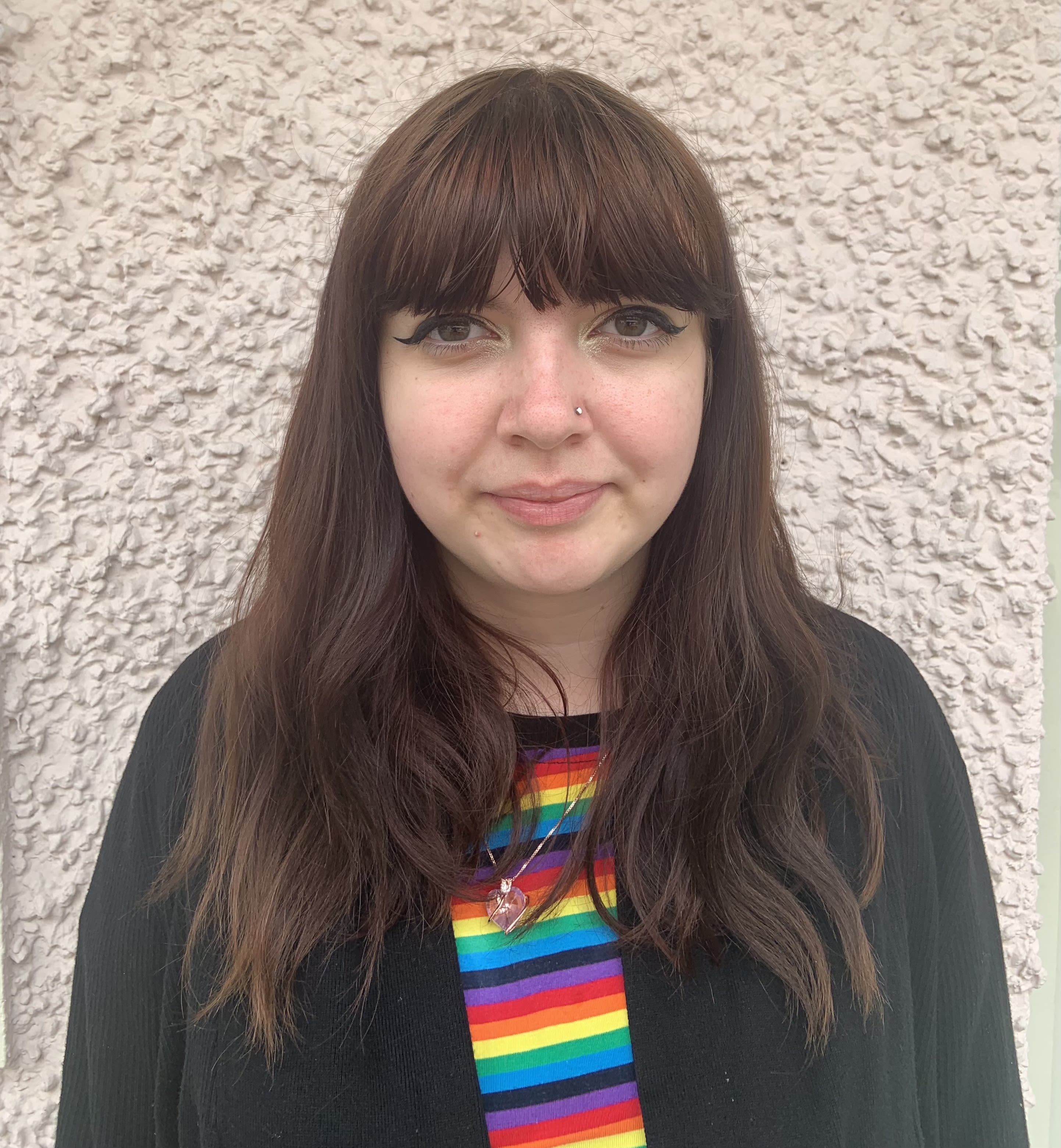
Headshot of Annabel Collins. Photographed by herself.
Headshot of Annabel Collins. Photographed by herself.
CRYBABY by Annabel Collins (she/her)
Annabel Collins, a recent graduate in Fine Art from the Northern School of Art, is an artist based in the North East.
Annabel identifies as a multimedia artist, with a focus on combining and experimenting with a variety of materials and methods. She uses these materials and methods to create works that become visual representations of her identity.
Influenced by the representation of identity within a world obsessed with social media, Annabel's work provides a physical view of the 'self' she wishes to provide to the world, one that draws away from the influences of social media.
Annabel believes that through forms of social media, such as Instagram, we are allowing a 'self' that is not real to dominate. Therefore, we are creating a collection of images that represent our visual preferences as opposed to our authentic selves. Annabel is constantly considering aesthetics whilst observing this.
Annabel's work for the Veiled Women exhibition is called CRYBABY. In her piece, she explores the role of gender stereotypes within our society, specifically stereotypes towards women.
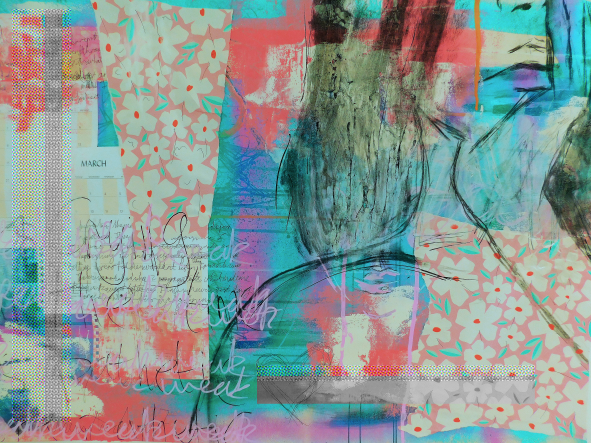
Annabel Collins, CRYBABY (2021), A1 mixed media on watercolour paper, Image courtesy of the artist.
Annabel Collins, CRYBABY (2021), A1 mixed media on watercolour paper, Image courtesy of the artist.
Interview with Annabel Collins for Veiled Women (2021).
Interview with Annabel Collins for Veiled Women (2021).
Interview with Annabel Collins for Veiled Women (2021).
Interview with Annabel Collins for Veiled Women (2021).
Curator's Note: One of my favourite parts of this work is its unapologetic tone. Annabel, as she points out herself, is not afraid of being a stereotypically 'girly' person, and in fact is proud that this is an aspect of her personality. This is a fresh approach to the idea of feminism, in that Annabel is suggesting that, although some people may perceive gender stereotyping to be anti-feminist, this is not always the case.

Annabel Collins, CRYBABY (2021), A1 mixed media on watercolour paper, Image courtesy of the artist.
Annabel Collins, CRYBABY (2021), A1 mixed media on watercolour paper, Image courtesy of the artist.

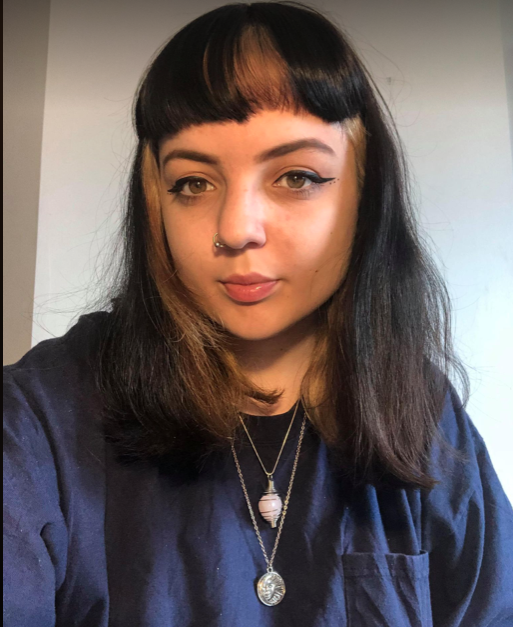
Headshot of Amy Heald. Photographed by herself.
Headshot of Amy Heald. Photographed by herself.
The Angel of the Shades by Amy Heald (she/her)
Amy Heald is a painter and photographer from Teesside in the North East. Her work concentrates on representing forms of urban architecture, specifically local public houses.
Amy is interested in public houses because they are a representation of social life, and her interest stems from the idea of a working structure transforming into a social one, for example a bank turning into a pub.
Amy portrays these structures on multiple different scales within painting, where she likes to play around with the idea of colour and colour theory. Ways in which she incorporates this into her work include: exaggeration of colours, the use of colour opposites, and, the use of complimentary colours.
Amy's work also revolves heavily around ideas of identity in association with public houses, especially when comparing the identity of working buildings, with the identity of social buildings, and seeing how these compare and contrast.
Amy's submission for the Veiled Women exhibition is called The Angel of the Shades, which has a large focus on the depiction of a female figure from the exterior of The Shades Hotel in Hartlepool.
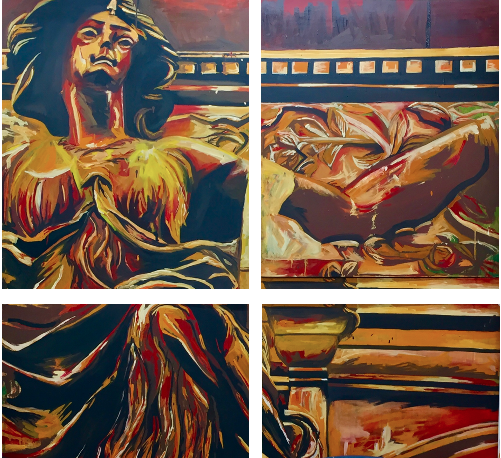
Amy Heald, The Angel of the Shades (2020), 6 X 7 ft oil and chalk on canvas, image courtesy of the artist.
Amy Heald, The Angel of the Shades (2020), 6 X 7 ft oil and chalk on canvas, image courtesy of the artist.
Interview with Amy Heald for Veiled Women (2021).
Interview with Amy Heald for Veiled Women (2021).
Interview with Amy Heald for Veiled Women (2021).
Interview with Amy Heald for Veiled Women (2021).
Curator's Note: I love the use of colour in this piece, which is not surprising when considering Amy's interest in colour. I believe that the use of browns and reds brings out the strength in this artwork, making the female figure depicted appear not as a fragile and feeble woman, but as a powerful and capable female figure. As a Classicist, also, I love the folds of the drapery which reminds me so much of ancient sculpture!

Amy Heald, The Angel of the Shades (2020), 6 X 7 ft oil and chalk on canvas, image courtesy of the artist.
Amy Heald, The Angel of the Shades (2020), 6 X 7 ft oil and chalk on canvas, image courtesy of the artist.

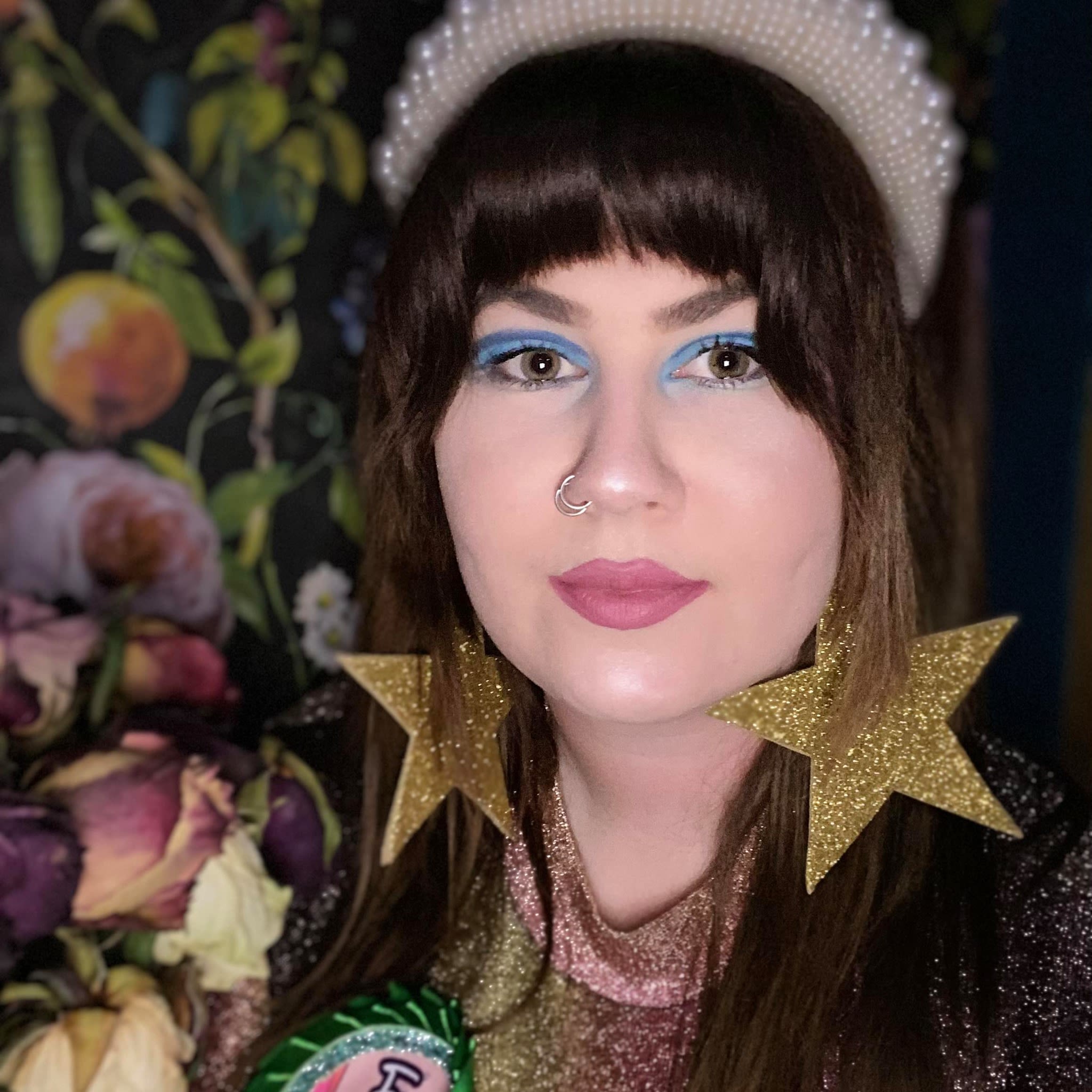
Headshot of Slutmouth. Photographed by herself.
Headshot of Slutmouth. Photographed by herself.
What it means to be a woman. by Slutmouth (she/her)
Slutmouth is a flamboyant, Hartlepool-based artist that focuses on rejecting the taboos we hold against our bodies, sexuality and mentality, by creating eclectic interiors and vibrant fashion pieces.
Slutmouth creates bespoke commissions for customers, ranging from album artwork to portraits and logo designs. She also curates events such as life-drawing, zine fairs, and embroidery classes.
In crating her works, Slutmouth anchors her surface designs by using traditional screen printing, digital and hand rendered illustrations, and combines these with traditional embroidery techniques.
Slutmouth's brand embodies punk and feminist ideologies, and conjures these ideas into gorgeous accessories that can be adorned on the body or in the home.
Slutmouth's work for the Veiled Women exhibition is called What it means to be a woman. and explores themes of femicide in our society. Please note, the voice-over explaining more about Slutmouth's submission is not spoken by the artist, but it does contain her own words.
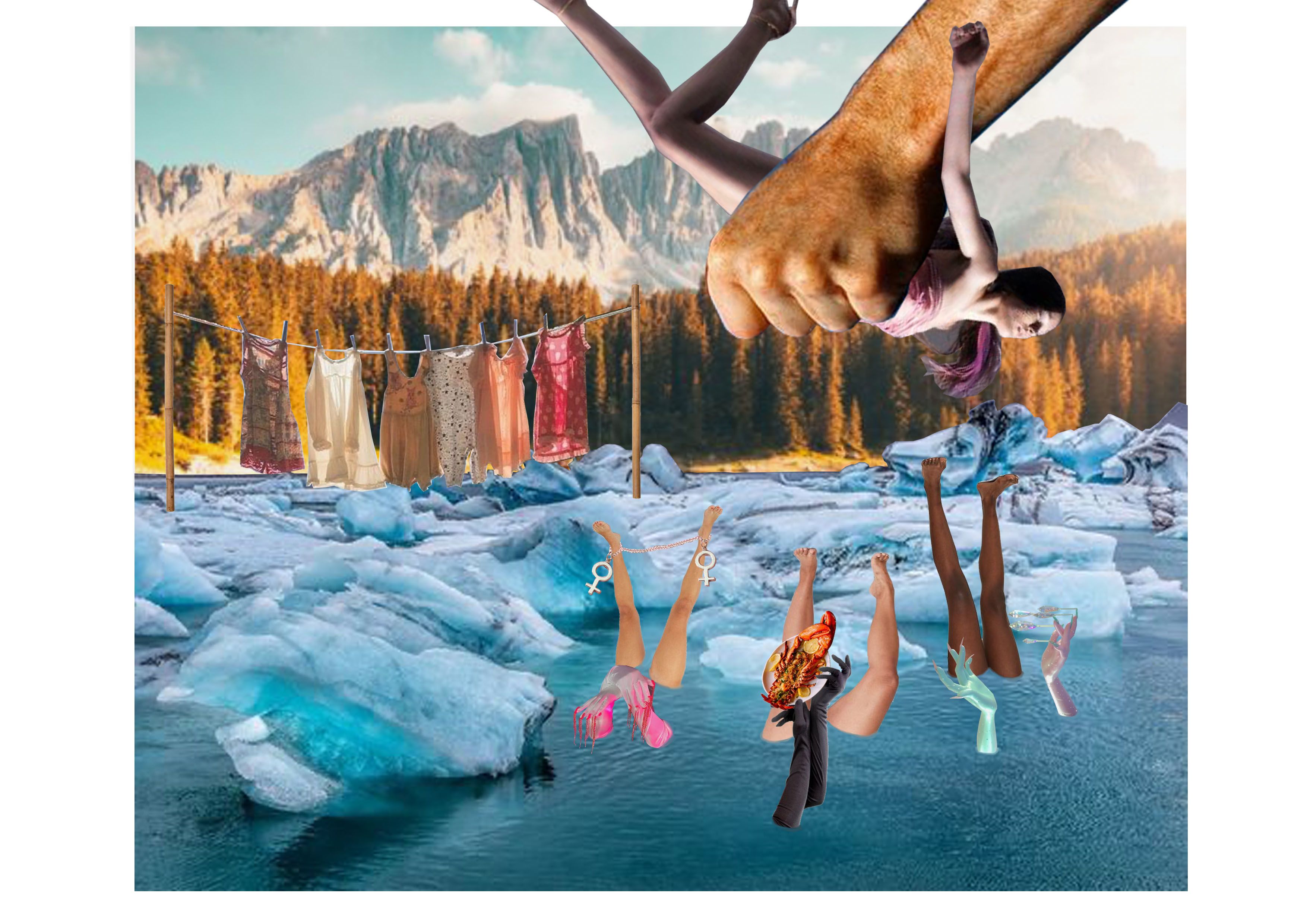
Slutmouth, What it means to be a woman. (2021), A4 digital collage with illustrated elements, image courtesy of the artist.
Slutmouth, What it means to be a woman. (2021), A4 digital collage with illustrated elements, image courtesy of the artist.
Interview with Slutmouth for Veiled Women (2021).
Interview with Slutmouth for Veiled Women (2021).
Interview with Slutmouth for Veiled Women (2021).
Interview with Slutmouth for Veiled Women (2021).
Curator's Note: I believe that Slutmouth's use of collage as a medium for this piece is really interesting. By definition, collage is the assemblage and layering of different forms to create a new whole, and this is very metaphorical for the focus on femicide within this artwork. Here, Slutmouth has layered different aspects of her work together, such as the clothing line being layered on top of the mountainous backdrop, much like different feminist issues are layered on top of one another in our society, culminating in the tragedy of femicide. As Slutmouth herself said, enough is enough.

Slutmouth, What it means to be a woman. (2021), A4 digital collage with illustrated elements, image courtesy of the artist.
Slutmouth, What it means to be a woman. (2021), A4 digital collage with illustrated elements, image courtesy of the artist.
What Does Feminism Mean to You?

"Throughout this exhibition space, I hope you can agree that we have seen a variety of ideas in answer to the question: what does feminism mean to you? And this was exactly what I was hoping for when I decided to focus this exhibition on feminism." Elle, Curator.
Within our student responses, there are some similar trends brought up again and again, for example the idea of equality for all genders. This idea of equality is also seen within the artworks displayed, for example Amy Heald's piece expresses an attempt to equalise the figures on The Shades Hotel exterior.
However, there were also some more niche ideas displayed in the student responses, such as the idea that feminism opposes the brutalisation of women. This idea is presented within Slutmouth's piece, which displays a backlash against the ongoing femicide pandemic we are still battling today.
Therefore, as this exhibition has shown, our collective and communal ideas on feminism are very similar, which proves that our society can do better in its treatment of all genders. The hope is that, one day, when asked the question: what does feminism mean to you? we can collectively answer that feminism equates to our society, as finally, society has taken feminism seriously, after generations of struggle and tragedy.
Thank you for visiting this exhibition space, and please make sure to follow the Durham University Student Art Prize 'Art School' that will be launching this November!
Follow Durham University Arts on social media for more updates and information:



